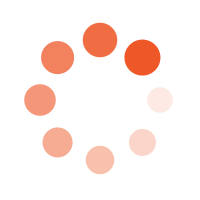Is Extending the Life of an Existing Product the Best Choice for Your Company?
With established brand loyalty and minimal technological change, extending the life of a well-received product can be the most prudent path forward.
In a business landscape where innovation often takes center stage, it can be tempting to focus solely on developing new designs. However, there are compelling reasons why your company might find greater value in extending the life of an existing product design rather than embarking on a new development project.
Here’s why this strategy might be the right choice for your business:

The focus and discipline of DFX is a powerful tool if used as part of a broader strategic approach to developing product/process differentiation, and a sustainable advantage against competition. Involve Design for X in Strategy. Once your team has determined the focus of your strategy, place the focus of design on developing competitive advantage.
At Boston Engineering, DFX is a core part of creating values during our product development process. We focus on several key DFX areas that align with our expertise:
- Design for Manufacturability (DFM)
- Design for Assembly (DFA)
- Design for Cost (DFC)
- Design for Testability (DFT)
- Design for Reliability (DFR)
- Design for Serviceability/Maintainability (DFS)
- Design for Usability (DFU)
- Design for Modularity (DFMo)
Learn more about Design for X (DFX) at Boston engineering: Boston Engineering Design for X

(continued from above)
1. Cost Efficiency
- Rationale: Extending the life of an existing product design is typically more cost-effective than developing a new design. The research, development, and testing phases associated with new product creation require significant investment. Conversely, enhancing or modifying an existing design leverages prior investments, reducing the need for substantial additional spending.
- Example: If a consumer electronics company is working with a well-established product, they can invest in incremental updates—such as improved battery life or new color options—rather than creating an entirely new product. This approach maintains profitability while conserving resources.
2. Faster Time to Market
- Rationale: Modifying an existing design allows your company to bring enhancements to market more quickly than developing a new product from scratch. This agility is particularly beneficial in competitive industries where being first to market can provide a significant advantage.
- Example: A company that manufactures household appliances might choose to extend the life of a popular product by adding smart features like Wi-Fi connectivity. By doing so, they can respond swiftly to market trends without the delays associated with a complete redesign.
3. Leveraging Established Brand Loyalty
- Rationale: Products that have already earned consumer trust and loyalty provide a strong foundation for ongoing success. Extending the life of a well-received design allows your company to build on this existing brand equity, reducing the risks associated with launching an entirely new product.
- Example: A fashion brand known for a specific line of handbags may choose to release updated versions with new materials or slight design tweaks. This strategy appeals to loyal customers who appreciate the familiar design while offering something fresh to entice repeat purchases.
4. Reduced Market Risks
- Rationale: Entering the market with a new product design carries inherent risks, including uncertain consumer reception and potential market saturation. By extending the life of an existing design, your company can mitigate these risks by capitalizing on a product that already has proven market demand.
- Example: A company that produces outdoor equipment may opt to enhance an existing line of tents with added features like improved waterproofing or lighter materials, rather than introducing a completely new tent model. This approach leverages the product’s established reputation while minimizing the risk of failure.
Interested in providing your product development team with DFX skills? Learn More about our Applied DFX process and development workshops.


(continued from above)
5. Maintaining Consistency in Regulatory Compliance
- Rationale: Products that already meet industry standards and regulatory requirements can continue to do so with minor updates, avoiding the complex and costly process of ensuring a new design complies with all necessary regulations.
- Example: A medical device company might choose to extend the life of an existing design that already meets stringent health regulations by adding features that improve usability or patient comfort. This strategy avoids the need for re-certification while offering enhanced value to customers.
6. Efficient Resource Allocation
- Rationale: Developing a new product design often requires significant resources, including time, personnel, and capital. By focusing on extending the life of an existing design, your company can allocate resources more efficiently, prioritizing areas where they will have the most impact.
- Example: A software company may choose to extend the life of a successful software application by releasing updates and new features over time. This approach maximizes the return on the initial investment while allowing the company to focus resources on other strategic initiatives.
7. Addressing Market Saturation
- Rationale: In markets where product categories are already saturated, launching a new design can be challenging. Extending the life of an existing product can help your company maintain its position without the pressure of trying to carve out a niche for a new product.
- Example: In the smartphone industry, where competition is fierce, a company might choose to extend the life of an existing model by introducing special editions or updates rather than developing a completely new design. This strategy helps maintain market presence without the significant risks of a new product launch.
8. Capitalizing on Established Supply Chains
- Rationale: Existing products benefit from established supply chains, reducing the complexity and cost of sourcing materials and components. By extending the life of an existing design, your company can continue to leverage these efficiencies.
- Example: An automotive manufacturer may extend the life of a successful car model by offering new trims or technology packages. This approach maintains the efficient supply chain and production processes already in place, keeping costs down and ensuring consistent quality.
Conclusion: The Strategic Value of Extending the Life of an Existing Product Design
By carefully assessing your company’s market position, financial resources, and long-term goals, and by leveraging the appropriate Design for X (DFX) methodologies, you can make informed decisions that maximize the value of your existing product portfolio while minimizing risk. In many cases, the choice to extend the life of a product can lead to sustained profitability, enhanced customer loyalty, and continued market relevance, all without the substantial investment and risks associated with developing a new design.New eBook Available Now!
"Leveling Up Existing Products through DFX"
-Download Insights from a DFX Subject Matter Expert-
 Developing successful new products from scratch is challenging enough, but what about improving on existing designs?
Developing successful new products from scratch is challenging enough, but what about improving on existing designs?
In this eBook, we’ll dive into the real-world experiences of DFX subject matter expert John DePiano, exploring the common areas where existing product owners excel, as well as the key opportunities where targeted DFX support can drive major improvements.

Understanding the Importance of a DFX approach
Applying Design for X (DFX) methodologies upfront in product development optimizes the entire lifecycle by improving manufacturability, testability, reliability, usability, and other critical characteristics. This avoids costly redesigns later on, facilitates high-quality products that satisfy customers, reduces manufacturing and service costs, and supports flexibility through modularity and platforms. The holistic perspective of DFX drives efficient, cost-effective delivery of successful products that provide competitive advantage. Investing in DFX early pays dividends across the entire product lifespan.
Do you offer training on DFX for engineering teams?
Education is critical to effectively implement DFX principles. We provide training tailored to your engineers’ roles and product lines. This includes overall DFX methodology, deep dives into specific disciplines like design for reliability or manufacturability, and practical application workshops. Our hands-on approach combines real-world examples and case studies with tutorials on leading DFX software tools. The goal is building organizational DFX expertise and establishing repeatable processes that endure beyond individual projects. Investing in DFX knowledge pays dividends across your entire product portfolio.

Ready to Begin your next DFX Project?
 Whether you’ve created a new technology, or have an innovative way to use an existing solution, Boston Engineering will turn your ideas into reality. Our experts and Industry Partners will enhance your current team or manage the entire Product Development Process from Market Analysis to Production. Don't leave complex projects or high visibility product launches to chance. Know you're going to get the results you want by working with industry leaders in design, development, and deployment of innovative products driven by Novel Engineering. Contact Boston Engineering Today to get started.
Whether you’ve created a new technology, or have an innovative way to use an existing solution, Boston Engineering will turn your ideas into reality. Our experts and Industry Partners will enhance your current team or manage the entire Product Development Process from Market Analysis to Production. Don't leave complex projects or high visibility product launches to chance. Know you're going to get the results you want by working with industry leaders in design, development, and deployment of innovative products driven by Novel Engineering. Contact Boston Engineering Today to get started.
No matter the challenge, our team possesses the expertise in the engineering disciplines and technologies you need to bring your vision to life. Impossible Challenge? Try Us.
-1.png?width=2000&height=279&name=MED%20Coffee%20Talk%20Mastering%20Use%20Cases%20%26%20Cybersecurity%20(2)-1.png)
Impossible Challenge? Try Us.
Selecting a partner to help you complete your design project is a valuable option to reduce project duration and save money.
The Boston Engineering product development system encompasses DFX to ensure a smooth product launch and success in the marketplace. Boston Engineering has DFX knowledge and experience to address aspects and values of a product such as manufacturability, test, reliability, safety, serviceability, cost, and compliance with industry standards and government regulations.

Imagine your Impact: Stay up-to date- with the latest insights and trends we're watching. Add your email address below and sign up for a Monthly Summary of our most impactful posts!










